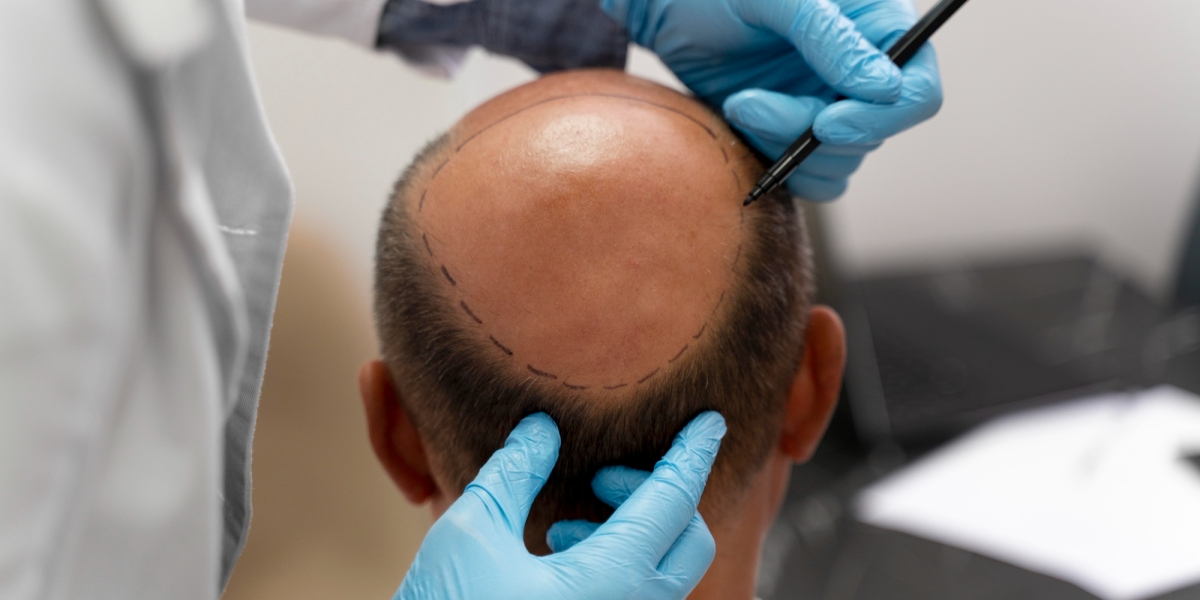Hair transplant is a popular surgical procedure designed to address hair loss and restore hair growth. Whether due to genetic factors, medical conditions, or other causes, hair loss can significantly impact one's appearance and self-esteem. Hair transplant surgery offers a long-term solution by relocating healthy hair follicles to areas of thinning or balding. This guide explores the types of hair transplant procedures, their benefits, what to expect during and after the surgery, and how to choose the right approach for your needs.
Types of Hair Transplant Procedures
-
Follicular Unit Transplantation (FUT):
- How It Works: Also known as the strip method, FUT involves removing a strip of skin with hair follicles from the donor area (usually the back of the head). The strip is then dissected into individual follicular units and transplanted to the thinning or balding areas.
- Benefits: Provides a large number of grafts in a single session, suitable for extensive hair loss. The results are typically natural-looking, and it can be more cost-effective for covering large areas.
-
Follicular Unit Extraction (FUE):
- How It Works: FUE involves extracting individual hair follicles directly from the donor area using a small, circular punch tool. These follicles are then implanted into the recipient area.
- Benefits: Minimally invasive with no linear scar, quicker recovery time, and less postoperative discomfort. It is ideal for patients who prefer shorter hairstyles and want to avoid visible scarring.
-
Direct Hair Implantation (DHI):
- How It Works: An advanced variation of FUE, DHI uses a specialized implanter pen to directly place hair follicles into the recipient area without creating recipient sites first.
- Benefits: Offers greater precision and control, leading to more natural-looking results and reduced trauma to the scalp. The procedure typically involves less bleeding and faster recovery.
-
Robotic Hair Transplant:
- How It Works: This method uses robotic systems to assist with the extraction and implantation of hair follicles. Robots like ARTAS are designed to enhance precision and consistency.
- Benefits: Provides accurate follicle extraction and placement, minimizes human error, and can result in faster and more consistent outcomes.
Benefits of Hair Transplant
-
Natural-Looking Results:
- Hair transplant procedures use your own hair follicles, ensuring that the transplanted hair grows naturally and blends seamlessly with the existing hair.
-
Permanent Solution:
- Transplanted hair follicles are typically resistant to the effects of hair loss, offering a long-lasting solution to thinning or balding areas.
-
Improved Self-Esteem:
- Restoring a fuller head of hair can significantly boost confidence and self-image, impacting both personal and professional aspects of life.
-
Low Maintenance:
- Once the transplanted hair grows, it requires no special care beyond regular hair maintenance, making it a convenient option compared to other hair loss treatments.
What to Expect During the Procedure
-
Consultation:
- Assessment: Your surgeon will evaluate your hair loss pattern, discuss your goals, and determine the best approach for your hair transplant. They will also review your medical history and explain the procedure in detail.
-
Preparation:
- Pre-Surgery: You may be advised to avoid certain medications or supplements that could affect blood clotting. The procedure is typically performed under local anesthesia, ensuring that you are comfortable throughout.
-
Procedure:
- Harvesting: In FUT, a strip of skin is removed from the donor area. In FUE and DHI, individual follicles are extracted using specialized tools.
- Implantation: The extracted follicles are carefully placed into small incisions made in the recipient area, following a natural hair growth pattern.
-
Duration:
- Length of Surgery: The procedure can take several hours, depending on the number of grafts being transplanted and the complexity of the case.
Post-Operative Care and Recovery
-
Initial Recovery:
- Aftercare: You may experience some swelling, redness, or discomfort in the treated areas. Your surgeon will provide specific instructions on how to care for your scalp, including cleaning and medication guidelines.
-
Healing Process:
- Scabbing and Shedding: Small scabs may form around the transplanted follicles, which will eventually fall off. Shedding of newly transplanted hair is normal as the follicles enter a resting phase before new growth begins.
-
New Hair Growth:
- Timeline: Initial hair growth can be seen within a few months, with full results typically visible between 9 to 12 months after the procedure. The new hair will grow naturally and blend with the surrounding hair.
-
Follow-Up Visits:
- Monitoring: Regular follow-up appointments with your surgeon will help ensure that the transplant is progressing well and address any concerns you may have.
Choosing the Right Hair Transplant Clinic
-
Experience and Credentials:
- Qualified Surgeon: Ensure that the clinic is staffed by board-certified and experienced hair transplant surgeons with a proven track record of successful procedures.
-
Technology and Techniques:
- Advanced Methods: Look for clinics that use the latest technology and techniques to ensure the best possible results.
-
Patient Reviews and Results:
- Testimonials: Read patient reviews and view before-and-after photos to gauge the clinic’s success rates and patient satisfaction.
-
Consultation and Costs:
- Transparent Pricing: Obtain a clear understanding of the costs involved, including any additional fees for follow-up care or medications. A thorough consultation will help you make an informed decision.
Conclusion
Hair transplant surgery offers a viable and effective solution for addressing hair loss and restoring a full, natural-looking head of hair. By understanding the various types of procedures, their benefits, and what to expect during recovery, you can make an informed decision and achieve your desired results. Consulting with a qualified hair transplant surgeon will ensure that you receive personalized care and achieve the best possible outcome for your unique needs.
